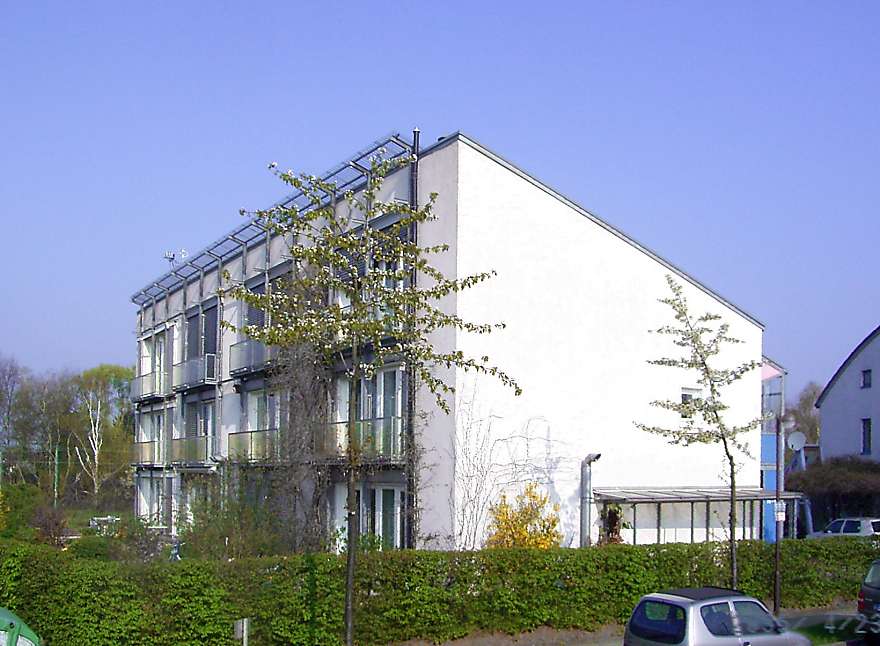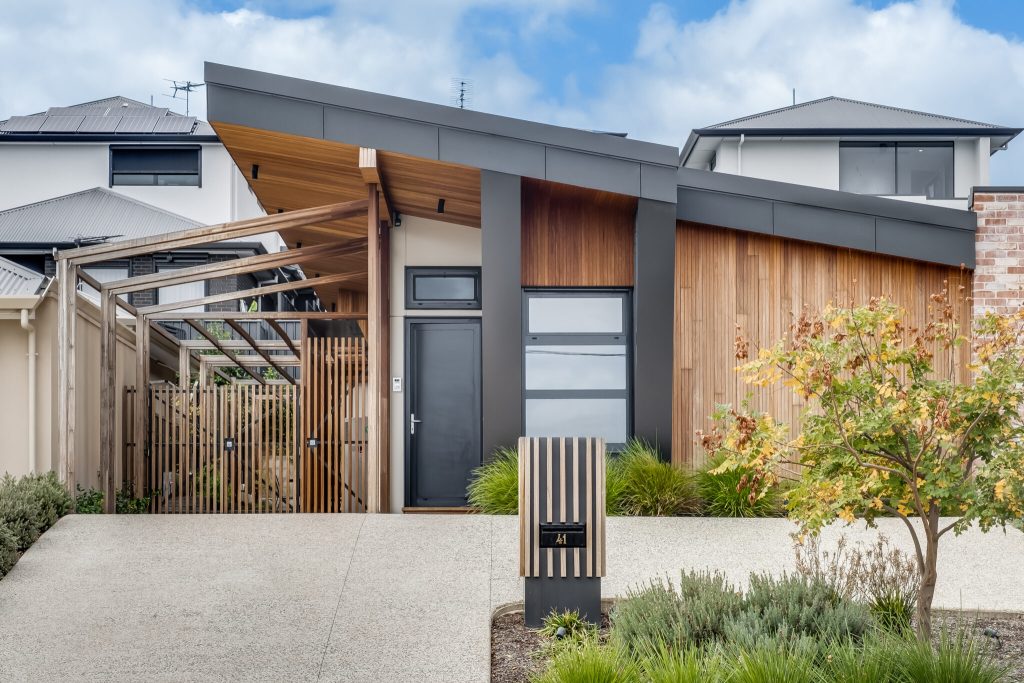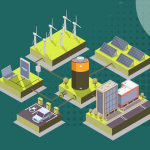You care about sustainability and are working hard to do everything right. But is your home letting you down? Globally, buildings account for a staggering 34% of energy demand and 37% of energy and process-related CO2 emissions.
That includes all buildings, but homes comprise a large proportion of the figure. Retrofitting is one thing, but newly built homes need to get greener, faster. How can this be done, and what role does smart technology play?
The Rise of Green Smart Homes
Over the past few years, two housing trends have strengthened.
- Smart homes: Equipped with sensors, connected devices and automation
- Green homes: Designed to reduce environmental footprint through efficient design, resource conservation, renewables and sustainable materials
Green smart homes combine both. These dwellings intelligently monitor or automate energy, water, air quality and waste management. At the same time, they are built to reduce carbon emissions and resource use.
For those interested in sustainability, smart green homes are more than a luxury — they represent a necessary shift. They help people live comfortably while lowering carbon footprints and building climate resilience.
Why are traditional homes such a drain on energy and a driver of emissions? Poor insulation, inefficient heating and cooling and leaky windows are problematic in many homes, especially older ones. Many conventional homes also rely on fossil fuels.
How Smart Technology Improves Sustainability
There are several main ways in which the smart home can become a greener home:
1. Energy
Automation, predictive controls and smart thermostats are key. Occupancy sensors mean heating and cooling can be lowered when not needed. This can significantly cut energy bills and emissions.
If just 55% of internet-enabled homes adopted smart thermostats, 6.91 gigatons of CO2 equivalent emissions would be avoided.
Smart lighting also saves energy. Such systems can turn off lights in unoccupied rooms or turn lights down when there is plenty of natural light. LED lights use 75% less energy than incandescent bulbs, yet last up to 25 times longer. When combined with smart controls, these energy savings can be even higher.
Automatic, smartphone-controlled lighting also has benefits that reach beyond green living. For example, garage lighting activated by motion sensors can help deter burglary, adding to a home’s overall safety and security.

2. Water
This involves greywater systems, rainwater harvesting and efficient fixtures. In a five-year study in New York City, connecting a smart cistern to a green roof resulted in a 10% improvement in stormwater retention. Widespread adoption of this would help reduce the risk of sewer overflows by ensuring tanks are emptied before storms.
In the U.S., the smart toilet market is growing at around 13% annually. Because they use significantly less water per flush, these fixtures are important for water conservation. As a side benefit, they also reduce the demand for toilet paper.
3. Monitoring
Energy monitoring systems enable residents to see the big picture. By monitoring energy consumption in real time, homeowners are encouraged to identify patterns. They can then act to mitigate energy waste, saving money and improving sustainability.
4. Smart Appliances
Fridges, dishwashers, washing machines and other appliances can be controlled to run off-peak. They can even be set to function only when there are high levels of renewable energy in the grid. Traditional appliances can become more energy-efficient, too — advances in smart plug technology can now seamlessly integrate them into your home systems.

5. Renewable Energy Sources
When a smart home incorporates renewable sources, such as solar panels, cost savings and environmental benefits can skyrocket. Solar power can be controlled by the home’s smart system, with little required input from the householder.
Policy and Market Drivers for Green Smart Homes
Stronger building codes, performance standards and certifications — such as LEED and Energy Star — are accelerating the move towards greener homes. Incentives, rebates and government assistance programs are reducing the associated costs.
Governments worldwide are also setting ambitious targets for net zero emissions. This is accelerating the adoption of smart green home technologies. In many regions, local authorities are introducing minimum energy performance standards for new buildings.
Financial institutions are increasingly offering green mortgages and preferential rates for energy-efficient homes, making it more affordable for buyers to invest in sustainable features. As climate-related risks become more prominent, insurance companies are beginning to reward homes with resilient, smart systems.
Additionally, homebuyers are increasingly valuing homes that deliver lower utility bills. The EPA estimates that an energy-efficient home could attract a resale premium of up to 8% — and more than 50% of purchasers felt that the benefits of a green home outweighed the cost. These combined policy and market forces are rapidly shaping the future of residential construction.
Here is a video from GearBrain explaining the environmental benefit of smart devices.
Key Features of Green Smart Homes
Most green smart homes incorporate some or all of the following:
- Effective insulation with a tightly sealed building envelope to reduce heat loss or gain
- High-performance windows and shading
- Passive solar orientation, overhangs, daylighting and natural cross-ventilation
- Use of the Internet of Things (IoT) to manage appliances, smart thermostats, occupancy sensors and automation
- Predictive controls to adjust HVAC settings based on weather or patterns
- Integrated solar power, heat pumps and battery storage
- Integration with grid services, including Demand Response programs
- Greywater reuse systems
- Low-flow water fixtures and efficient water harvesting
- Materials with low emissions
- Smart HVAC filtration, heat-recovery ventilators and careful control of moisture
5 Inspirational Green Smart Home Examples
Around the world, real-life green smart homes are showing what is possible. Here are five that are leading the way.
1. Passive House in New York
Situated in Newburgh, NY, this three-story historic townhouse was a retrofit project. It was designed to meet Passive House Institute U.S. standards and other environmental certifications. It uses energy recovery ventilation, LED lighting, smart appliances, water recirculation and on-site solar energy. A smart energy management system monitors the building’s performance. The three tenant families use this information to reduce energy use further.
Occupancy sensors in all common spaces minimize wasted lighting. Exterior lighting uses time-of-day sensors. Temperature loggers and humidity sensors throughout the building ensure comfort. The highly insulated building envelope keeps interior air temperatures comfortable and reduces noise pollution. Per resident, energy costs are 90% cheaper than in comparable buildings.

2. Green 10-Star Home in Australia
This home in Woodforde, a suburb of Adelaide, is the first in South Australia to have received a 10-star energy rating from Australia’s Nationwide House Energy Rating Scheme. It was designed on passive principles but with smart technology at its heart. The energy management system provides real-time feedback on energy usage. This enables the residents to make adjustments as required. Lighting, shutters, windows and awnings can be controlled from a smartphone.
A recovery ventilation system extracts interior air and replaces it with fresh air. Crucially, the air passes through a heat exchanger. This means that in winter, the already warm air from the house is used to heat the cooler, incoming air. There are smart appliances and solar panels on the roof. The smart system can be fully automated to, for example, begin charging the family’s electric vehicle when the solar battery is 80% charged.

3. Smart Community in Sweden
This development, which will eventually number 500 single-family homes, is situated in Brobyholm, Sweden. Experts believe it could become one of the smartest residential communities in the world. Energy-sharing will be a key feature, with EV chargers and solar inverters synchronized to optimize energy. Each home will have solar panels, with stored electricity used across the community. Smart appliances will operate when tariffs are most affordable and when solar storage levels are sufficient.
All residents will have access to the energy management system, which details energy consumption. Heating and cooling systems will be optimized in response to exterior temperatures, and interior lighting will be auto-adjusted according to exterior light levels.
4. Smart Neighborhoods in the U.K.
Several communities in Oxfordshire, England, are pioneering the use of smart technology in green homes and neighborhoods. “Smart and Fair Neighbourhood” trials implemented a range of innovative solutions, such as smart meters, home energy management systems, battery storage and rooftop solar panels. Residents were able to monitor and optimize their energy consumption in real time.
The communities also participated in flexible energy tariffs and peer-to-peer energy trading within their neighborhoods. The results were highly encouraging, and households reduced their carbon emissions while cutting their energy bills. These trials demonstrated how green smart homes can empower entire communities.

The Future of Green Smart Homes
Smart green homes are no longer a futuristic concept — they are a practical and essential solution for sustainable living today. By combining intelligent automation with eco-friendly design, these homes offer a powerful way to reduce energy use. They can conserve water and lower carbon emissions, all while enhancing comfort and convenience.
The real-world examples from New York, Australia, Sweden and the U.K. show that smart green homes can thrive in diverse climates and communities. Whether through advanced insulation, integrated solar or community-wide energy sharing, these projects prove that technology and sustainability go hand in hand.
As building codes tighten and buyers increasingly value efficiency, the market for smart green homes will only grow. Incentives and new technologies are making it easier than ever for homeowners to adopt these features, whether in new builds or retrofits.

Looking ahead, the integration of smart systems with renewable energy and community networks will continue to unlock new possibilities. By embracing these innovations, society can create homes that are resilient, efficient and ready for a greener future.
Frequently Asked Questions
What is a smart green home?
A smart green home combines eco-friendly design with smart technology. It aims to reduce energy, water and resource use while maximizing comfort and efficiency.
Are smart green homes expensive to build?
While upfront costs can be higher, smart green homes save money over time through lower utility bills and maintenance.
Can existing homes be upgraded to smart green homes?
Yes, many features like smart thermostats, solar panels and smart appliances can be retrofitted into existing homes.
Do smart green homes really make a difference for the environment?
Absolutely. They significantly reduce carbon emissions, water use and waste, which helps combat climate change and resource depletion.





